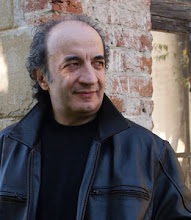
Dear Japanese friends,
Today I'll talk about the birth of Jazz-Rock in the States.
I told you in my previous writing on this Blog, that I'm thinking that there was definitely... "Something in the air" in those years all over the world, as people "with an ocean or more" between them, with no direct contacts and with not a big attention from media at the time, in the sense of seeing emphasized their attempts, had the same feelings, the same thinking and similar attitudes towards exploring new musical directions.
The first steps into the adventurous world of jazz-rock, in the States have been done by vibraphonist Gary Burton. He started with Stan Getz's quartet (1964-66), and he started his first experiment with rock rhythms on the album "The Time Machine" that featured bassist Steve Swallow.
On the same year, following this intention of goin' out of existing boundaries, he attempted also a fusion of jazz and country music on "Tennessee Firebird".
But, at the end.. ladies and gentlemen...the first jazz-rock album in the states is "Duster" by Gary Burton and his quartet with guitarist Larry Coryell, with Steve Swallow on bass and drummer Roy Haynes. Mike Gibbs and Roy Gibb complete the line-up. The album received a surprising; saw a prize for his "courage with a 5-star review from Down Beat when it was released.
Differently from "Open" who was really "open" to a modern new approach in blending several rock, jazz and new elements into new directions, although "Duster" is still more jazz than rock, Burton and his quartet definitely started "to look around"
The main factor that gives the album the "jazz-rock" factor, or it would be better to say, that gives to this originally oriented jazz album a more defined rock accent is Larry's Coryell guitar. Even before Larry Coryell had approached in some ways pop and rock with Free Spirits' album, "Out of Sight and Sound".
Burton's multi-mallet vibes attack is more intense and sharp than ever. The rhythm section with bassist Steve Swallow and drummer Roy Hayes creates an interplay that fits perfectly with the new direction. There are undeniable "signs of future" on this album that will come to full completion in the late-'60s and throughout the '70s with the exciting evolution of "Jazz-rock", specifically the more sophisticated one.
Later Gary Burton embraced electronic keyboards for "Good Vibes", which was basically a rhythm'n'blues album in which he was pioneering a four-mallet technique. Burton built step by step his unique sound owing little to the jazz pioneers of the instrument like Lionel Hampton and Milt Jackson. Down Beat magazine awarded him its Jazzman of the Year award in 1968. Although Burton's basic sound hadn't really changed from the previous year, his openness toward other styles made his Quartet one of the most interesting, "open" and significant jazz groups of the period. This was the also the first of the four Burton-Coryell recordings.
Such albums as "Duster" and the following "Lofty Fake Anagram" established Burton and his band as progenitors of the jazz-rock phenomenon.
DUSTER - track list
1. Ballet 4:57
2. Sweet Rain 4:26
3. Portsmouth Figurations 3:06
4. General Mojo's Well Laid Plan 5:00
5. One, Two, 1-2-3-4 5:59
6. Sing Me Softly of the Blues 4:08
7. Liturgy 3:29
8. Response 2:16
----------
Gary Burton Vibraphone
Larry Coryell Guitar
Mike Gibbs Trombone
Roy Gibbs Drums
Roy Haynes Drums
Steve Swallow Bass
----------
my dear friends, ...see you tomorrow with "miles"
till then,
stay happy
Beppe


No comments:
Post a Comment